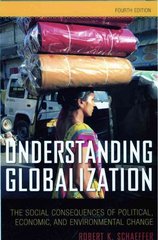Question
Beef is an approximately homogeneous product, produced by a large number of ranchers. Pricing is transparent, so this is a perfectly competitive industry. For the
Beef is an approximately homogeneous product, produced by a large number of ranchers. Pricing is transparent, so this is a perfectly competitive industry.
For the purposes of our analysis, we assume that all producers have an identical cost structure. Moreover, there is a large pool of potential entrants who operate under cost conditions identical to those of active producers in this industry. It takes about 2 years to acquire grazing land, build a ranch and purchase a herd. When an existing ranch wants to expand, it needs to allocate some of its existing herd to breeding, temporarily reducing production. When a ranch exits the market, it usually sends its remaining herd to slaughter. This can lead to a temporary increase in production.
Suppose that initially, we're in a long-run equilibrium where price equals full-reinvestment average total cost (FR-ATC).
Now, suppose that a reputable study touting the health benefits of eating beef is published in the New England Journal of Medicine, increasing the demand for beef. Simultaneously, the price of cattle feed decreases. Industry watchers are surprised by both of these developments, but both are expected to be permanent. Consider the situation 1 year after these changes occur. For each variable below, determine whether it is greater than, equal to, or less than its value at the initial long-run equilibrium. Briefly explain your answer. Problem 1a) (4 points) Market price of beef. Problem 1b) (4 points) Number of active cattle ranches. Problem 1c) (4 points) Profits of each active cattle ranch. Now consider the situation 5 years after the changes occur. For each variable below, determine whether it is greater than, equal to, or less than its value at the initial long-run equilibrium. Briefly explain your answer, perhaps using an appropriate diagram. Problem 1d) (6 points) Market price of beef. Problem 1e) (6 points)Number of active cattle ranches. Problem 1f)(6 points) Profits of each active cattle ranch. Problem 1g) (5 points) Beef industry insiders have long observed a peculiar pattern in beef prices, known in the trade as "overshoot". When a long-run cost increases or demand decreases sufficiently to bring the market price below ATC, the market price dips significantly lower and remains at the lower price for 1-2 months before moderating. Likewise, long-run cost decreases or demand increases are followed by a spike in price which lasts for approximately 9 months before moderating. What particular characteristics of this industry might explain why it exhibits this "overshoot"?
Step by Step Solution
There are 3 Steps involved in it
Step: 1

Get Instant Access to Expert-Tailored Solutions
See step-by-step solutions with expert insights and AI powered tools for academic success
Step: 2

Step: 3

Ace Your Homework with AI
Get the answers you need in no time with our AI-driven, step-by-step assistance
Get Started


